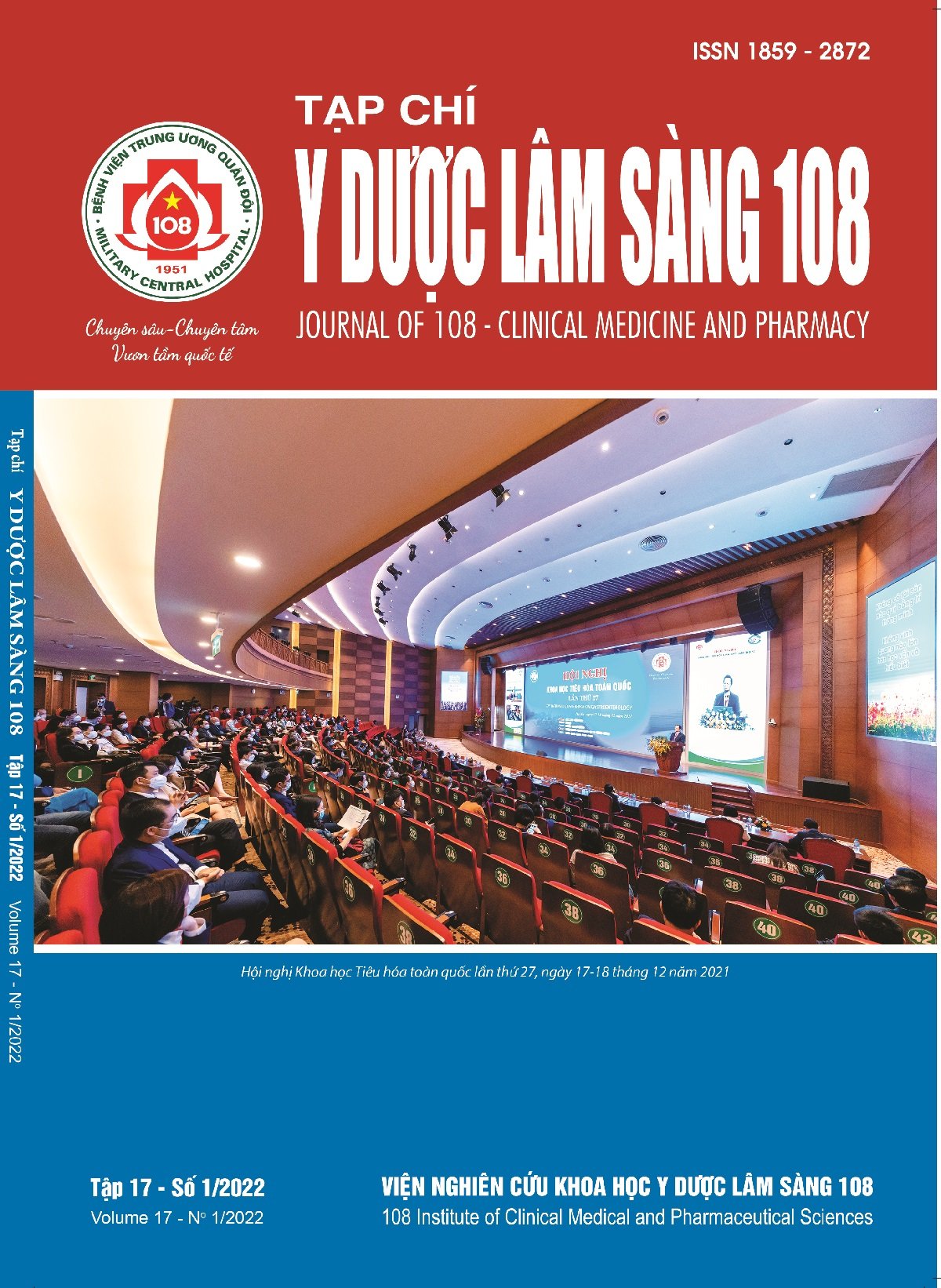Histopathological features of hepatocellular carcinoma in patients with hepatitis B virus infection
Main Article Content
Keywords
Abstract
Objective: To describe some of the pathological characteristics of hepatocellular carcinoma and to find out about the relationship with hepatitis B virus genotype. Subject and method: A cross-sectional study of 107 HCC hepatitis-B-virus-infected patients (genotype B and C) were pathologically confirmed primary HCC following surgery at Cho Ray Hospital. Result: Histopathological structure raft accounted for 57%. The average and poor differentiation accounted for 78.5% and 21.5%, respectively. There was a relationship between the degree of differentiation with the Edmondson-Steiner grade and histological structure (p<0.001). Conclusion: The histopathological structure of hepatocellular carcinoma in patients infected with hepatitis B virus is mainly raft. The degree of differentiation is related to the Edmondson-Steiner grade and histological structure.
Article Details
References
2. Bosman FT (2010) WHO classification of tumours of the digestive system. International Agency for Research on Cancer, Lyon.
3. Li X, Wang L, Zhong Y, Wong VW, Xu Z, Liu Y, Li Q, Xin S, Zhao J, Xu D (2010) Hepatitis B virus (HBV) subgenotypes C2 and B2 differ in lamivudine- and adefovir-resistance-associated mutational patterns in HBV-infected Chinese patients. J Clin Microbiol 48(12): 4363-4369.
4. Yan B, Wei JJ, Qian YM, Zhao XL, Zhang WW, Xu AM, Zhang SH (2011) Expression and clinicopathologic significance of glypican 3 in hepatocellular carcinoma. Ann Diagn Pathol 15(3): 162-169.
5. Cao Y, Jiang Z, Wang S, Zhang H, Jiang Y, Lv L (2018) Prediction of long-term survival rates in patients undergoing curative resection for solitary hepatocellular carcinoma. Oncol Lett 15(2): 2574-2582.
6. Rastogi A (2018) Changing role of histopathology in the diagnosis and management of hepatocellular carcinoma. World J Gastroenterol 24(35): 4000-4013.
7. Kew MC (2014) Hepatocellular carcinoma: epidemiology and risk factors. J Hepatocell Carcinoma 1: 115-125.
8. Ashtari S, Pourhoseingholi MA, Sharifian A, Zali MR (2015) Hepatocellular carcinoma in Asia: Prevention strategy and planning. World J Hepatol 7(12): 1708-1717.
9. Lauwers GY, Terris B, Balis UJ, Batts KP, Regimbeau JM, Chang Y, Graeme-Cook F, Yamabe H, Ikai I, Cleary KR, Fujita S, Flejou JF, Zukerberg LR, Nagorney DM, Belghiti J, Yamaoka Y, Vauthey JN (2002) Prognostic histologic indicators of curatively resected hepatocellular carcinomas: A multi-institutional analysis of 425 patients with definition of a histologic prognostic index. Am J Surg Pathol 26(1): 25-34.
10. Vauthey JN, Lauwers GY, Esnaola NF, Do KA, Belghiti J, Mirza N, Curley SA, Ellis LM, Regimbeau JM, Rashid A, Cleary KR, Nagorney DM (2002) Simplified staging for hepatocellular carcinoma. J Clin Oncol 20(6): 1527-1536.
11. Liu H, Yang Y, Chen C, Wang L, Huang Q, Zeng J, Lin K, Zeng Y, Guo P, Zhou W, Liu J (2020) Reclassification of tumor size for solitary HBV-related hepatocellular carcinoma by minimum p value method: A large retrospective study. World Journal of Surgical Oncology 18(1): 185.
 ISSN: 1859 - 2872
ISSN: 1859 - 2872
